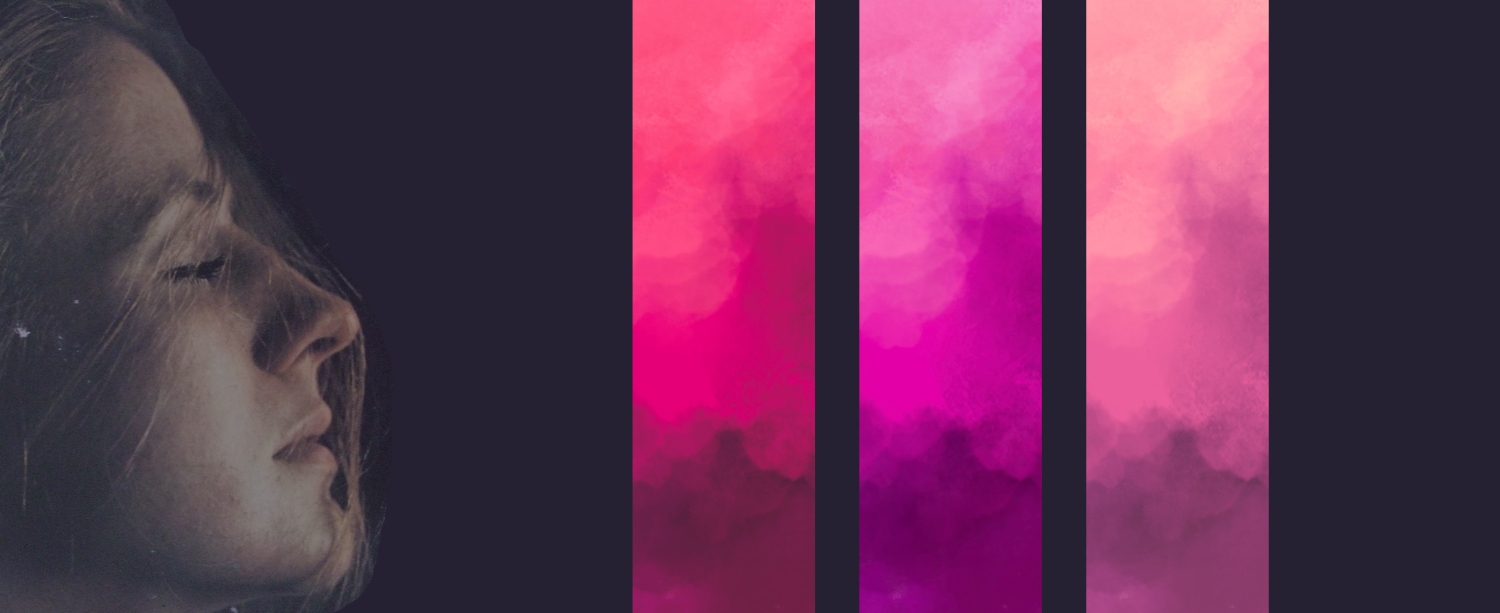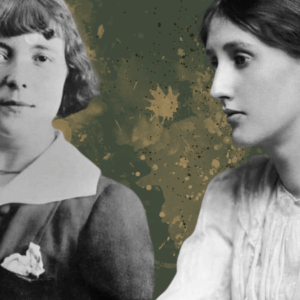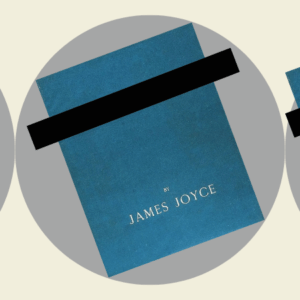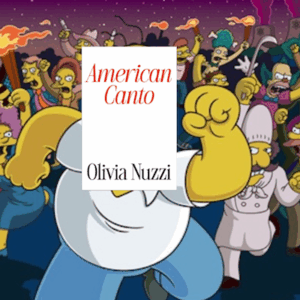
Immaculate, Erotic and Quintessentially Modern: On Edna O’Brien’s Night
Jane Alison In Praise of a Little-Known Novel From Ireland’s Foremost Chronicler of the Feminine Experience
“What is your type?” Mary Hooligan asks a prospective lover in Edna O’Brien’s early novel Night. “Do you like it straight or sausage, do you like rubber goods?” Later, another prospect asks Mary if she fancies things pertaining to the belly. Yes, she says: “I even had a bit of a yen for a Black Mass…semen on the belly, a great gout of demon’s shampoo.” A later bedmate, she says, likes “somersaults, a maiden’s closed purse, the old poculum sursum, the romp, the wrangling brandlebuttock… the billow, the bruises, the bites, tossed and turned, inside out, raucous, dulcet, a pandemonium, rumps rearing, slathering, words, wet words, tongues, coals, baskets of fire, and devil’s pokers going through.”
The carousel of sex in this book! Those dirty, wet, glittering words! When I first read Night thirty years ago, it made me giddy. What was this thing? Shockingly sexy, torrential yet compacted, modern, Modernist, and quintessentially female. Yet it’s rarely cited among O’Brien’s books, far less read and revered than, say, The Country Girls trilogy, which was also sexy, modern, and female enough to have been burned in O’Brien’s Ireland. Night is stranger, something else. Last summer, before O’Brien died, I dove back into that feverish novel to see just what she had concocted.
Brief but potent, Night follows Mary, middle-aged and sleepless, as she vigils her way through a night in a London house she’s sitting. Hours pass, she fingers the fur quilt, listens to trees and cars, ponders the bird-patterned wallpaper, wanders to the kitchen. Zero happens. But what goes on in her mind! At its center: her twenty-year Odyssey through men, through an archipelago of grisly, mortifying sex. “I’ve met them all,” she tells us. “The cretins, the pilgrims, the scholars, and the scaly-eyed bards prating and intoning for their bit of cunt.”
When I first read Night thirty years ago, it made me giddy. What was this thing? Shockingly sexy, torrential yet compacted, modern, Modernist, and quintessentially female.
Night is deeply autobiographical: in it are the scandalous flight from Ireland, marriage to a despot, swinging in London (O’Brien was famous for her parties—Jackie O, Princess Margaret, Marianne Faithful, and Paul McCartney were there; and for her many suitors—Marlon Brando, Richard Burton, a married politician). Yet Night is also experimental; O’Brien wrote it when trying psychoanalysis with R. D. Laing, and not just analysis, but acid. In 1970 she had a devastating trip that—like splitting open a pomegranate to find a clutch of gorgeous, bloody seeds—transformed her writing, she said, deepening both her “already dark self” and her “obsession with language and [its] potential power and music and marvelousness.” The novel is spiked with trauma yet glitters with the wit and sheer life of this “playgirl of the Western world,” as Vanity Fair called her. Autobiographical, yes, and engaging to read just to spy on this life. But it’s the complex form and language that make Night brilliant, an underappreciated late-Modernist masterpiece.
It got cruel reviews when it appeared in 1972. From the TLS: “self-indulgent whimsy,” “gift-wrapped porn,” “one long act of public literary masturbation.” Library Journal was kinder: “few living writers use language as richly and sensuously as O’Brien.” There’s been more appreciation of Night since then, especially upon the novel’s reissue in 2014 with Andrew O’Hagan’s introduction, but still not as much as it deserves. Happily, though, the novel stars quietly in Sinéad O’Shea’s new documentary, Blue Road. O’Brien’s son Carlo Gébler—while still a teenager—made a documentary based on Night, and his footage populates O’Shea’s film. May this film lead readers back.
When critics read Night, they often see it as spawn of Molly Bloom’s famous soliloquy in Ulysses. It does have something of Molly’s riverine thinking and bawdiness, and O’Brien once said that she’d like to write a book-length Mollyish narrative—but that Night was not it. (She’s spoken irritably of being called “a bargain-basement Molly Bloom.”) In any case, Night isn’t so Mollyish. A middle-aged woman in bed ruminates on her past and sex, yes. But, as O’Brien has drily noted, her Mary is by woman made, not man. And despite what most critics say, Mary Hooligan’s narrative is not stream of consciousness; the prose is far more orderly and visibly composed. This isn’t a facsimile of a woman’s wandering mind seen through a speculum by a man, but a deep recounting.
Yet even feminist critics consider Night a song in the dark that refuses coherence and resists “meaning in the sense of building toward a climax” (Helen Thompson). The memories that form the main stream of Night are indeed disordered temporally. But time isn’t the only ordering force in narrative, of course, nor does every shapely story need to move toward a (masculo-sexual) climax, especially one about female sexuality. Lots of other ways for prose to move and have order.
If the enterprise here is internal, O’Brien had to choose which memories to tell, how to arrange them, and how to keep moving without “plot.” On a purely textual level, the sentences are a torrent, jouncing on rocks, gliding gleefully through mud. Then there’s the gruesome pleasure in witnessing each sexual exploit. Each memory stings and glows. But how to arrange these memories? How to create an end and a reason for this one night to matter?
By the end, I do feel that I’ve been through a journey. I’m exhausted, exhilarated, and elsewhere from where I began, and not just because day has broken. O’Brien has strung Mary’s seemingly chaotic memories along a subtle path. She said that when she wrote Night, after the terrifying acid trip, her mind was “on stilts.” I believe it. Yet there they are: stilts. Sturdy enough to walk on. So I began to study those stilts, peer under Mary’s bed, to see what gives this dreamfever novel its path and sense of shape.
Here we are then, in bed with Mary. “A fourposter no less, satinized headboard, casters. Paws come out from underneath.” Thoughts come, too, about sleep, time, and men, those cretins, pilgrims, scholars, and bards. But first Mary invokes a deeper past, calling to the mauve hills of her childhood, to Coose, and dwelling first on her kith, her kin: her son, mother, and father. These early images of son Tutsie as a small boy indeed help walk Mary back to her own childhood, to that haunting home in Coose, as she tries to recollect what she saw there in “the many long, sad blotched mirrors.” Wisps of images, smells, and sounds of home and her parents give way to a lengthy recounting of her mother, Lil, dying, a-bed and ranting. And then, with mother buried, Mary begins her own a-bed recitation.
She starts with the most recent paramour, Nick, who just left a note on her door and is the reason, she says, she can’t sleep. “Missed a nice fuck.” Then she dives far back to the crooner who semi-deflowered her as a girl, when she was dressed as Snow White and the Seven Dwarfs. Next, the likable Moriarty, who leaves for cigarettes one night but doesn’t come back. Then a waiter with a soft black fingernail and incestuous siblings with whom she has a raucous time only to be robbed. Until now—the middle of the book—the incidents have been one-off affairs, glancing, not leaving deep marks. But at the midpoint, the hue of erotic memories seems to alter.
“More mortification,” she begins, and tells of a rich nob she picks up who gives her chilling sexual instructions and tells her, sharply, to “watch out” when strands of him drip from her to his floor. When “for some flapdoodle reasons” she asks him to promise to see her again, with her son, he says “I don’t even rate you” and picks up his phone. Next, a long one, Dr. Flaggler, Mary’s ex-husband, who tells her ”You are not going to escape me, not now, not ever, you are not going out of my sight, you poor zealous wretch, you cannot make a life for yourself without me, it is beyond you, it is unattainable.” Then the Duke, with whom she has a lively “courtship” until in a single moment he both proposes to her and is revealed to be married, and who follows his proposal with a threat: “Soon you will be on the shelf.” Finally, devastatingly, the Finn, whom she actually loves, but who chooses to stay with his wife.
After this catalogue of sexual misadventure, nearing the end of the book, Mary turns briefly to women: a pair of critical older women and an estranged, ranting friend. They feel like ghosts of Mary’s mother from the start of the book, or ghosts of what she could yet become—shipwrecked, raving, old. Then, a sweet surprise, her son Tutsie reappears through a letter. “Even seeing or saying his name gives me such a thrill, it goes through me like a wash or a ripple.” He will soon be home. So Tutsie opens the gate to the past near the novel’s start and now, near the end, opens a new gate, to the future. After Tutsie’s reappearance, Coose returns, too: Mary has recently gone home to try to make amends with her bitter father, but in him resides “the stance, the stare, the wild umbrage prevalent in all the men that I had loved, unloved, fled from.” And now we return to the present: “I am up now, limbering. To hell with sleep and twilight meanderings….the worst is over, the lurid fever has passed.” Something has been exorcised.
Having Tutsie and an echo of mother, father, and Coose at the end as well as the start is the novel’s first sign of structure: symmetry. Tales of home and kin frame the central tales of sex. Perhaps, then, the book has further symmetry, in which case the center might hold a key; the tone of memories does seem to shift at midpoint. In Night, the center is not one of Mary’s sexual exploits but an episode right after the sexy young thieves rob her: needing money, she poses naked for an art class. “‘Open up, sunshine!’” the instructor says—meaning her legs. “He told [the students] to move in on me, to look at me, to inhale me, to smell me, to internalize. ‘Value for money, sunshine,’ he said, giving my pelvic bone a bit of a jolt. The one called Joseph was peering into my nipple so that it must have been reflected in the pupil of his small eye…‘Get that arse open, get those hams out,’” the instructor says. “‘You always improve when there’s a bit of naked quim in the room,’” he adds to a student, at which point Mary is “like a switchboard gone mad, sending different signals to myself—open, close, shut, spraddle, dilate, contract, Lil, Mother of Jesus, Jesus, St. Anthony of Padua, fallopian, hemorrhage, blossom, alone, forever, never, hold on, Holy Moses, King of the Jews. He bemoaned the fact that they weren’t in possession of a Polaroid. ‘Tasty’ was the word he used then. ‘Don’t ye baw’ at me,’ I said suddenly.” And then, “to my astonishment, I rose up and kept on saying it, and added a volley of abuse such as that he had black teeth and scurf, which he had…and there was I skeetering down the icy street naked and yelling, ‘Don’t ye baw at me’ and he shouting some terrible threats.”
Sex-tinged, yes, but this midpoint episode is unlike others, for here Mary sits naked and is studied: an object of speculation, prodded open by a man so others can peer in and portray her. Important to note now: near the start of the novel, we learn that although Mary’s mother has recently died, Mary has even more recently written to her—yes, the dead mother—asking if she could imagine the color of her own womb: “I asked if she had any inkling, any hunch, about the exact color of her innards, my earliest known abode….I seem to remember streaks of color, zebras, sometimes pink, sometimes green…I said she might like to be extravagant, she might like to sally into inventiveness, give vent to herself, lie if need be.”
Mary is, fantastically, asking her (dead) mother to take up the speculum and look inside her own sexual self. This is, I think, exactly what Mary is doing to herself in Night: performing an autopsy of her sexual life, peering into her own “quim.” The outrage of the studio scene is that there she is not the one doing it: it is being done to her: art-class-cum-gynecological visit. Here Mary is as close as she will come to the condition of Joyce’s Molly Bloom, and she will not have it. She bolts.
After that episode, though, Mary has indeed peered more deeply into herself and dug up darker stuff. This centerpiece works as a turn or a hinge between two wings of memory: the sexual incidents in the first half are glancing, light, those of a playgirl; those in the second, pained, dark, those of a woman who wanted but did not find love. After the studio comes the rich nob; the brutish husband; the Duke. The final extended memory is most excruciating: the Finn, whom she has loved. He follows her to England. With him, she says, “I smiled, the way happiness ordains it. Nearness, farness. How much longer would he stay? Yet there was hope, voiced hopes, like beacons in the dark. He would bring me to the sea-girt isles.” He tells Mary that he is “slowly finding out” that he is in love with her. But then he falls silent. She follows him to Spain, but he will not see her. She falls to drunken pieces. Some time later, he writes again an impossible fractured poem of a letter:
Impossible to see you
now— cannot leave
NEXT TIME
Always next time
Next time
next time
next time
Next time is now last time.
I post this to you directly.
To which Mary responds, among many flaming words: “You cur. I professed to love you. It was all lies, junk.”
It’s not a man’s journey through a day, but a woman’s journey through a night: a feminine Odyssey of leaving home in search of self and love.
The closest she has come to the “one true love” is the long memory she reaches last, having been gyring to it all night: this is something we needed to reach slowly. True to the novel’s chiaroscuric aesthetic, though, this heartbreaking episode is balanced by a miniature, grotesque pendant: a “mogul” she flees when he calls her ”a crapper, a jerk, a motherfucker, a cocksucker, a souped-up bag,” and the cabdriver to whom she gives a quick hand.
So there’s been a deeper, darker scrutiny in this second half, the Underworld and its worst monsters faced. But she does something else in the second half, too: she pierces the darkness with shafts of light. For there is another, lesser, point of symmetry between the book’s halves: in both are brief passages about extracurricular visitors to the house she’s sitting. In the first half, they’re mostly men delivering pamphlets or collecting dues, and she hides from “those gadflies who try to get in if you’re in a negligee or a shift, keep peering at you around the pap region.” In the novel’s second half, though, the visitors are small girls with “little spindles” for legs. “How they smiled…the eyes were shining and agog…I could have eaten their smiles.” These girls start to come Saturdays for safaris, in which Mary is to “tell them about the magic rites of plants and about herbs and pond life, and what gods and what goddesses had for their emblems. Times like that I am forgetful and laughing.” As she is when she has the glad tidings of her own son’s return.
The second half of the novel, then, is more intense tonally: the sexual relations are deeper, more painful. Yet, alongside them are poignant moments with children, moments that offer grace. In a 1973 interview, O’Brien said, “When I started writing I…was romantic and dreamt of the one man, a Heathcliff figure. Having had children who are now teenagers has done something to my sense of values about what love is, what tenderness is, and over the years I have come to love my children more than I have ever loved a man….The man-woman thing isn’t my biggest pull any more. All of that now seems a little wearisome.” The sequencing of memories in Night subtly enacts that shift, revealing path and structure.
If Night has any Joyce in its veins, if O’Brien was writing from or against his work (she did write a biography of him), why not look at Ulysses more broadly, not just at Molly Bloom? Topsy-turvy, Mary calls her story at the start. Indeed. It’s not a man’s journey through a day, but a woman’s journey through a night: a feminine Odyssey of leaving home in search of self and love. “Oh, shadows of love, inebriations of love, foretastes of love, trickles of love, but never yet the one true love,” she says when her recitation is over. Yet the day has a nice nip, and she has a liking for everything: that is, for life.
And on she wanders! “Oh, star of the morning,” she says at the end. “Oh, slippery path, oh, guardian angel of vagrants, givvus eyes, lend us a hand, let’s kip down on some other shore, let’s live a little before the awful all-embracing dark enfolds…”
This has been one woman’s night of auto-inspection, looking into herself and her sexual past and coming through. And at the center of this dark rosary of memories, in that hellish artist’s studio, lies the very inverse of this auto-inspection: a male artist nudging her legs open and peering in: an embedded, revised portrait of Molly Bloom herself. “And yes I said yes I said Yes,” murmurs Molly. Not Mary Hooligan. She shouts, “Don’t ye baw’ at me!” and charges naked down the street. The speculum is hers to wield, the hues of her quim hers alone to render.
__________________________________

Villa E by Jane Alison is now available in paperback from Liveright Publishing Corporation, an imprint of W.W. Norton & Company.
Jane Alison
Jane Alison is the author of The Sisters Antipodes and the craft book Meander, Spiral, Explode: Design and Pattern in Narrative, among other titles, and she teaches creative writing at the University of Virginia. Her new novel, Villa E, about Modernist Irish designer Eileen Gray, has just come out in paperback.












